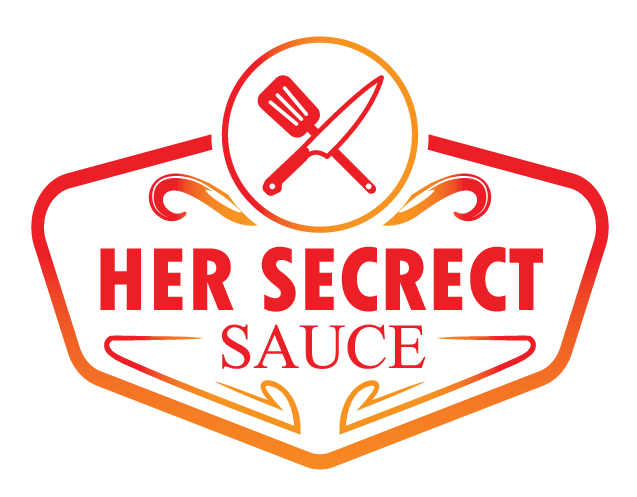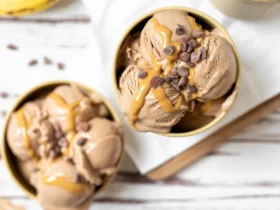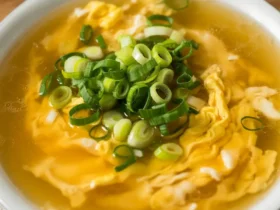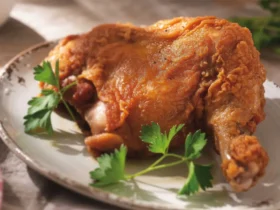Okay, let’s talk about that moment. It’s 6 PM, everyone’s hungry, and you want something that tastes like you spent hours on it, but you definitely did not.
I’ve been there more times than I can count. This is the recipe for that exact night. I’m going to show you how to make Chicken Piccata that’s so good, you’ll feel like a fancy restaurant chef, even if you’re still in your sweatpants.
This whole thing is about turning simple stuff into something special. It’s fast, it’s easy, and that lemon butter sauce is just… well, you’ll see.
What You’ll Need
Getting your ingredients ready first is like 90% of the battle, I swear. It’s a habit I picked up in busy kitchens, and it saves you from running around like a crazy person later. Here’s everything you’ll need, laid out simple.
For the Chicken
| Ingredient | Amount |
|---|---|
| Boneless, skinless chicken breasts | 2 large (about 1.5 lbs total) |
| All-purpose flour | ½ cup |
| Kosher salt | 1 tsp |
| Black pepper | ½ tsp, freshly ground |
| Unsalted butter | 4 tbsp, divided |
| Olive oil | 2 tbsp |
For the Amazing Lemon Sauce
| Ingredient | Amount |
|---|---|
| Dry white wine (like Pinot Grigio or Sauvignon Blanc) | ½ cup |
| Low-sodium chicken broth | ½ cup |
| Fresh lemon juice | ¼ cup (from 1-2 lemons) |
| Capers, drained | 2 tbsp |
| Fresh parsley, chopped | 2 tbsp |
| Cold unsalted butter | 2 tbsp, cut into small pieces |
A little note on the wine. If you don’t drink wine or don’t have any, just use an extra ½ cup of chicken broth with a tiny splash of white wine vinegar. It works great. For the capers, get the non-pareil kind if you can. They’re smaller and have a better texture.
The Right Tools for the Job
You don’t need a bunch of fancy gadgets for this. Seriously, your regular kitchen stuff will do just fine. Having the right pan makes a big difference, though.
| Tool | Purpose |
|---|---|
| Large skillet (not non-stick) | For getting a great sear |
| Meat mallet or rolling pin | To flatten the chicken |
| Shallow dishes or plates (2) | For the flour dredge |
| Tongs | For flipping the chicken |
| Whisk | For making the sauce |
| Cutting board & sharp knife | Basic prep work |
See? Nothing crazy. A stainless steel or cast iron skillet is best because the little brown bits that stick to the bottom are pure gold for the sauce. A non-stick pan just doesn’t create them.
Pro Tips From My Kitchen
I’ve made this dish hundreds of times, and I’ve made all the mistakes so you don’t have to. Here are the three biggest game-changers that take this from “good” to “wow.”
1. Don’t Skip Pounding the Chicken.
This feels like an annoying extra step, but it is the absolute key. Pounding the chicken to an even ½-inch thickness does two things. First, it makes it super tender. Second, it cooks in just a few minutes, so it stays juicy instead of turning into rubber. You can use a meat mallet, or if you don’t have one, the side of a can or a rolling pin works too. Just place the chicken between two pieces of plastic wrap first to avoid a huge mess.
2. Your Pan Needs to Be Hot.
Before the chicken even thinks about touching that skillet, the butter and oil should be shimmering. Not smoking, but shimmering. This is how you get that perfect, golden-brown crust. If the pan isn’t hot enough, the flour coating will just soak up the oil and get soggy. It’s a sad sight. Give the fat a good minute or two to heat up properly.
3. Cold Butter is the Secret to a Silky Sauce.
When you finish the sauce, you add the last two tablespoons of butter off the heat. And it has to be cold. Swirl the pan or whisk it in until it melts. This little trick is called “monter au beurre” in French kitchens, and it makes the sauce creamy, glossy, and thick without any cornstarch. If you add warm butter or add it over the heat, it will just melt and make the sauce greasy.
Let’s Make Some Chicken Piccata
Alright, you’ve got your stuff, you’ve got the secrets. It’s time to cook. We’ll go step-by-step, and I promise it’s easier than it looks.
Step 1: Prep the Chicken
First, let’s get that chicken ready. If your chicken breasts are really thick, slice them in half horizontally to make four thinner cutlets. Place one cutlet at a time between two pieces of plastic wrap and pound it with your mallet or rolling pin until it’s about ½-inch thick all over. It makes a bit of a racket, but it’s worth it.
Step 2: Set Up Your Dredging Station
Grab a shallow dish or a plate. Mix the ½ cup of flour, 1 teaspoon of salt, and ½ teaspoon of pepper together. Give it a quick stir with a fork. This is what’s going to create that delicious crust.
Step 3: Get the Pan Hot
Place your large skillet over medium-high heat. Add 2 tablespoons of butter and 2 tablespoons of olive oil. Let it get nice and hot until the butter is melted and foaming a little. You should see it shimmer.
Step 4: Dredge and Cook the Chicken
Take one piece of chicken at a time and press it into the flour mixture, coating both sides. Gently shake off any extra flour. (If you have too much flour on it, the coating gets gummy). Carefully place two cutlets in the hot pan. Don’t overcrowd it! Cook for about 3-4 minutes on each side, until they’re beautifully golden brown and cooked through.
Step 5: Rest the Chicken
Once the chicken is cooked, move it to a clean plate. You can tent it with a little foil to keep it warm. Cook the remaining two pieces of chicken the same way, adding a little more butter or oil if the pan looks dry. Once all the chicken is cooked, set it aside.
Step 6: Start the Sauce (The Best Part!)
Turn the heat down to medium. See all those brown bits stuck to the bottom of the pan? That’s flavor. Pour in the ½ cup of white wine (or broth). It will bubble up like crazy. Use a wooden spoon or a whisk to scrape all those tasty brown bits off the bottom of the pan as the wine sizzles. Let it cook for about a minute until the wine has reduced by about half.
Step 7: Build More Flavor
Pour in the ½ cup of chicken broth and the ¼ cup of fresh lemon juice. Bring it to a simmer and let it cook for about 3-4 minutes. The sauce will start to thicken just a little bit.
Step 8: Finish the Sauce
Turn off the heat completely. This is important! Now, add the 2 tablespoons of drained capers and the 2 tablespoons of cold butter pieces. Swirl the pan continuously until the butter has melted completely and the sauce looks creamy and glossy. (If the sauce seems too thick, you can add a tablespoon of broth or water to thin it out).
Step 9: Bring It All Together
Stir in the fresh parsley. Taste the sauce and add a little more salt or pepper if you think it needs it. Return the chicken cutlets to the pan, turning them over to coat them in that glorious sauce. Let them warm through for just a minute.
Step 10: Serve It Up!
Serve the chicken immediately, with extra sauce spooned over the top. You did it!
Substitutions and Fun Variations
One of the best things about cooking is making a recipe your own. Here are a few ways you can switch things up.
- Gluten-Free? Easy. Just swap the all-purpose flour for a gluten-free all-purpose blend. Rice flour also works really well for a light, crispy coating.
- No Capers? If you’re not a fan of capers, you can leave them out. The sauce is still delicious. Some people like to add chopped green olives or even some thinly sliced mushrooms, which you can sauté after the chicken is done.
- Try Veal or Pork. This recipe is classic with veal scaloppini. You can also use thin-cut, boneless pork chops. Just follow the exact same steps.
- Add Some Garlic. If you’re a garlic lover, mince up a clove or two and add it to the pan for about 30 seconds right before you add the wine. Just be careful not to let it burn.
Meal Pairing Ideas
This dish has such a bright, zesty flavor that it pairs well with a lot of different things. You don’t need anything complicated.
- Pasta: Angel hair pasta tossed with a little olive oil and parsley is the classic pairing. It’s perfect for soaking up all that extra sauce.
- Potatoes: Creamy mashed potatoes or simple roasted potatoes are fantastic. The sauce acts almost like a gravy.
- Vegetables: Roasted asparagus or green beans with a little lemon zest are my go-to. A simple green salad also works perfectly to cut through the richness.
Tips for Leftovers and Storage
If you happen to have any leftovers (which is rare in my house), they store pretty well.
Just put the chicken and any extra sauce in an airtight container in the fridge. It will keep for up to 3 days.
To reheat, it’s best to do it gently in a skillet over low heat. You can add a splash of chicken broth or water to the pan to help loosen up the sauce and keep the chicken from drying out. I would avoid the microwave if you can, as it can make the chicken a bit rubbery.
Frequently Asked Questions
Here are some questions that pop up all the time. Hopefully, these help you feel even more confident.
Q1. Why did my breading fall off the chicken?
Ans: This usually happens for two reasons. Either the pan wasn’t hot enough when you added the chicken, or you moved the chicken around too much while it was cooking. Let it form a nice crust before you try to flip it.
Q2. Can I use bottled lemon juice instead of fresh?
Ans: You can, but I wouldn’t recommend it. The sauce is the star of the show here, and fresh lemon juice has a much brighter, cleaner flavor that really makes the dish shine. Bottled juice can sometimes taste a little dull or metallic.
Q3. My sauce is too thin! What do I do?
Ans: Don’t panic! Just let it simmer for a few more minutes on the stove to reduce and thicken up naturally. If you’re in a real hurry, you can mix 1 teaspoon of cornstarch with 1 tablespoon of cold water to make a slurry, then whisk that into the simmering sauce.
Q4. Can I make this recipe ahead of time?
Ans: It’s really best when served fresh. But, you can definitely do some prep ahead of time. You can pound and flour the chicken cutlets a few hours in advance and keep them in the fridge on a baking sheet. Then you just have to pan-fry and make the quick sauce right before dinner.
Wrapping Up
See? That wasn’t so hard. You just made a restaurant-quality meal in your own kitchen, probably in less than 30 minutes. The combination of that crispy chicken with the tangy, buttery, salty sauce is just one of those perfect things in life.
Now go enjoy it! And when you’re done, I’d love for you to come back and leave a comment. Tell me how it went! Did you try any variations? Did your family love it? Your feedback makes this whole thing way more fun. Enjoy your dinner






Leave a Reply